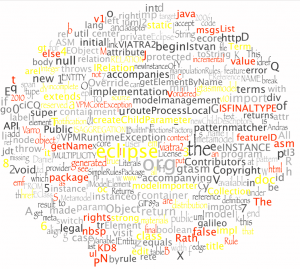Parsing textual notation has a long history in computer science. This long time has produced many great and efficient parsing algorithms, which were optimized to the extreme by compilers for different programming languages. However in the recent years the development of integrated development environments are accelerated, adding more and more services to previously simple features like code editors and automatic background compilation. These with the rise of domain specific language frameworks which allows the user to define an arbitrary language declaratively causes that present-day computers still struggle under the resource requirements of these technologies.
While waiting in front of a textual editor, I’ve started thinking about why does the editor need to re-run the parsing algorithm every time I hit button (of course I’m aware of the fact that the main cause of the slow responsibility is probably not the parsing algorithm itself). A fully incremental approach could make these tools more responsive which would remove a lot of pain from its users. As I’m already familiar with an incremental query engine (IncQuery) the thought about using it to parse text couldn’t leave my mind.
The following article presents the experiment I’ve done as a proof-of-concept. It’s far from being useful and reveals more problems than it solves it does not produce an AST just accepts or rejects the input string, however it may be interesting as an approach and maybe in the future it will be more than just a stupid idea. Continue reading “Parsing textual input with IncQuery”






